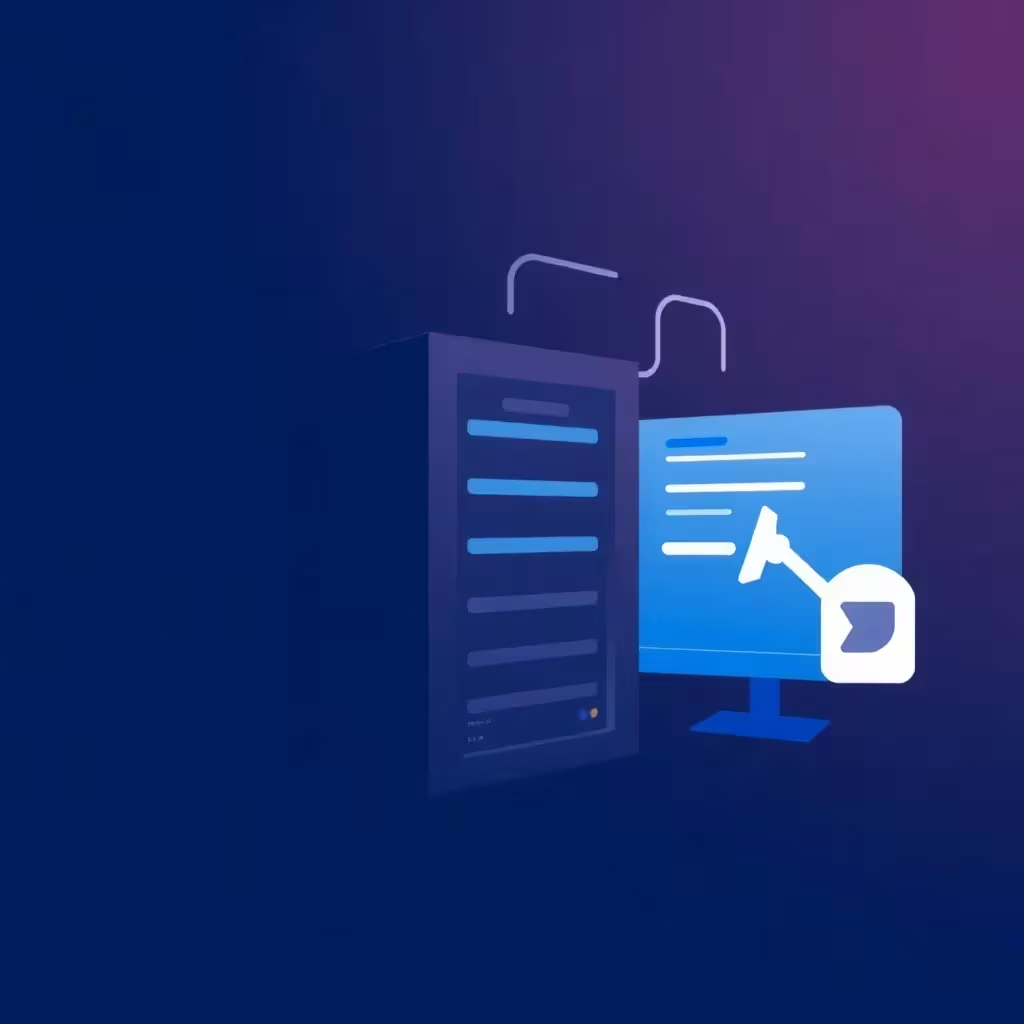Django: The powerful Python web framework for modern applications
Django is a highly developed, open source web framework for the Python programming language. It was developed to facilitate the creation of complex, database-driven websites and follows the principle of "Don't Repeat Yourself" (DRY). Django places great emphasis on the reusability of components, rapid development and a clean, pragmatic design. These features make it a preferred choice for developers worldwide who want to create efficient and scalable web applications.
History and development of Django
The framework was developed in 2003 by Adrian Holovaty and Simon Willison while they were working as web programmers for the Lawrence Journal-World newspaper. Inspired by the efficiency and simplicity of the framework they needed, they decided to create Django. The name "Django" honors the famous jazz guitarist Django Reinhardt, known for his exceptional technique and creativity. In July 2005, Django was released under a BSD license, which contributed to its rapid distribution and acceptance in the developer community. Since its introduction, Django has continued to evolve and is now one of the most popular Python frameworks for web development.
Architecture of Django: The MTV pattern
Django follows the Model-Template-View (MTV) architectural pattern, which is similar to the more familiar Model-View-Controller (MVC) pattern. This structure helps developers to keep the code clean and organized:
- Model: Defines the data structure and the database schema. It represents the database tables and their relationships.
- Template: Determines how the data is presented to the user. It contains HTML, CSS and JavaScript, which shape the user interface.
- View: Contains the logic for processing requests and returning responses. It acts as a link between the model and template.
This separation facilitates the maintenance and expansion of applications, as each component can be developed and tested independently.
Django ORM: Efficient database management
A key feature of Django is its powerful Object-Relational Mapping (ORM) system. It allows developers to interact with databases without having to write direct SQL. The ORM abstracts the database operations and makes the code more portable between different database systems such as PostgreSQL, MySQL and SQLite. With Django ORM, complex queries can be made simpler and more readable, speeding up development and reducing errors.
Integrated functions of Django
Django offers a variety of integrated functions that significantly accelerate web development:
- Robust authentication system: Management of users, groups and authorizations.
- Automatically generated admin interface: A powerful backend interface for managing content.
- Flexible URL routing configuration: Customizable URLs for better usability and SEO.
- Powerful form framework: Creation and validation of HTML forms.
- Integrated safety functions: Protection against cross-site scripting (XSS), cross-site request forgery (CSRF) and other threats.
- Caching framework: Improved performance through caching of frequently accessed data.
- Internationalization and localization support: Multilingual applications are easy to implement.
- Test framework: Comprehensive application tests to ensure code quality.
These functions make Django a comprehensive tool for modern web development.
Security in Django
Security is a top priority with Django. The framework provides built-in protections against many common security risks such as SQL injection, cross-site scripting and click-jacking. Django implements security best practices, including secure password handling through hashing algorithms and avoiding the disclosure of sensitive information in error messages. Developers must still ensure that they follow security guidelines and regularly apply security updates to ensure the integrity of their applications.
Excellent documentation and community support
Another major advantage of Django is its excellent documentation. The official Django documentation is comprehensive, well-structured and constantly updated. It contains detailed explanations, step-by-step tutorials and practical examples that are valuable for both beginners and experienced developers. In addition, the Django community is active and supportive. There are regular Django conferences (DjangoCons) around the world, numerous Django-specific meetups, and a variety of online forums and resources for developers of all experience levels. This community encourages knowledge sharing and helps developers solve problems and develop their skills.
Django REST Framework: Creating robust APIs
Django supports the creation of RESTful APIs through the popular Django REST Framework. This allows developers to create powerful and scalable APIs that can be seamlessly integrated with various front-end technologies such as React, Angular or Vue.js. With Django REST Framework, developers can easily create serializers, implement authentication systems and perform API testing. This makes it ideal for developing modern web applications based on microservices or single-page applications (SPAs).
Scalability of Django applications
Scalability is another area where Django shines. Many large websites and applications, including Instagram, Mozilla, Pinterest and Disqus, use Django as their foundation. The framework can easily scale from small projects to applications with millions of users. By using caching, database optimization and asynchronous programming, Django applications can handle high loads and growing user numbers without losing performance.
Django's 'Batteries Included' philosophy
Django's philosophy of 'batteries included' means that it comes with many useful tools and libraries that simplify common web development tasks. This includes features such as:
- Form framework: Creation and validation of HTML forms with built-in form fields and validation rules.
- template system: A separate template language for separating logic and presentation, which facilitates the creation of dynamic websites.
- Support for sessions and cookies: Management of user sessions and storage of session data.
- Migration framework: Management of database changes and version control of the database schema.
- signaling system: Decoupling of application components through the use of signals for notification of events.
These integrated tools reduce the need for third-party packages and significantly speed up development processes.
Content management systems with Django
For developers interested in creating content management systems (CMS), Django provides a solid foundation. There are several popular Django-based CMSs, such as Wagtail and django CMS, that facilitate the creation of content-centric websites. These CMSs offer user-friendly admin interfaces, flexible content models and support for third-party app extensions. They are ideal for blogs, corporate websites, e-commerce platforms and other applications that require extensive content management.
Django for Single-Page Applications (SPAs)
For developers interested in creating single-page applications (SPAs), Django can be used as a backend API. In combination with frontend frameworks such as React or Vue.js, this enables the creation of modern, responsive web applications. Django provides the necessary RESTful APIs, while the frontend handles the user interactions and the rendering of the user interface. This separation of backend and frontend promotes a clear distribution of responsibilities and facilitates the maintenance and further development of the application.
Asynchronous programming with Django
Django's support for asynchronous programming has improved significantly in recent versions. With the introduction of ASGI (Asynchronous Server Gateway Interface), developers can now create asynchronous views and middleware, improving performance for I/O-intensive operations. This is particularly useful for applications that need to process real-time data or support many simultaneous connections, such as chats, live updates or streaming services. The asynchronous support makes Django more versatile and better suited for modern, high-performance web applications.
GeoDjango: Geographical applications made easy
An often overlooked aspect of Django is its support for geographic applications through GeoDjango. This extension allows developers to create location-based functions and Geographic Information System (GIS) applications. GeoDjango can be used to perform complex spatial queries and effectively manage geographic data. This is ideal for applications such as map services, geolocation, location-based services and many other projects that integrate geographic data.
Explicit configuration and code maintainability
Django's philosophy of explicit configuration by convention makes the code more readable and easier to maintain. Although this can sometimes lead to more boilerplate code, it makes it easier for new team members to understand and work with existing projects. Clear configuration files and well-structured projects encourage collaboration and reduce the likelihood of errors. This contributes significantly to the long-term maintainability and scalability of projects.
Django for companies: Stability and reliability
For companies looking for a stable, proven framework, Django offers a reliable choice. Its long history, wide industry acceptance and active development make it a safe bet for long-term projects. Django's robust security features, scalability and extensive documentation ensure that organizations can build on a solid foundation for their web applications. In addition, its large community provides access to numerous resources and support, making the development and maintenance of enterprise applications much easier.
Best practices for development with Django
To get the most out of Django, developers should follow some best practices:
- Use of virtual environments: Isolate your project dependencies with tools such as virtualenv or pipenv.
- Modular structure: Structure your projects into reusable apps to increase maintainability.
- Regular tests: Use the integrated test framework to ensure the quality and functionality of your application.
- Version control: Use Git or other version control systems to track and control the development process.
- Documentation: Document your code and APIs thoroughly to facilitate team collaboration.
- Optimization of the database: Use indices and optimized queries to improve the performance of your application.
These best practices help to ensure that Django projects remain efficient, scalable and easy to maintain.
Optimization and performance tips for Django applications
The performance of a Django application can be optimized using various techniques:
- Caching: Implement caching mechanisms such as Memcached or Redis to store frequently accessed data and shorten response times.
- Database optimization: Use efficient queries, indexes and database pooling to improve database performance.
- Asynchronous processing: Use asynchronous views and middleware to improve the handling of simultaneous requests.
- Content Delivery Networks (CDNs): Distribute static and multimedia content via CDNs to reduce loading times.
- Minimization of static files: Compress and bundle CSS and JavaScript files to reduce the number of HTTP requests.
- Profiling and monitoring: Use tools like New Relic or Django Debug Toolbar to identify and fix bottlenecks.
By implementing these optimizations, developers can significantly increase the performance of their Django applications and provide a better user experience.
Django in the cloud and containerization
Django is ideal for use in modern cloud infrastructures and containerized environments. Cloud platforms such as AWS, Google Cloud Platform and Microsoft Azure offer extensive support for Django applications, including managed services for databases, caching and scaling. Using containers with Docker allows developers to deploy their applications consistently and portably. Kubernetes can then be used to orchestrate containers to ensure high availability and scalability. These technologies facilitate the deployment and management of Django applications in complex, distributed environments.
Expandability with third-party packages
Django's extensibility is another big advantage. There are a variety of third-party packages and extensions that offer additional functionalities. These range from improved admin interfaces to advanced authentication systems. Popular packages include:
- Django Allauth: A comprehensive authentication package for social login and more.
- Django Celery: For asynchronous task processing and background work.
- Django Channels: Enables the handling of WebSockets and asynchronous protocols.
- Django Rest Framework: For the creation of powerful RESTful APIs.
- Django Debug Toolbar: A useful tool for performance monitoring and troubleshooting during development.
These packages extend the functionality of Django and enable developers to create customized solutions for their specific requirements.
Contributions to the Django community
The Django community is one of the framework's strongest features. Developers can contribute to the further development of Django by submitting bug fixes, suggesting new features or improving the documentation. There are also numerous open source projects and libraries based on Django that are maintained by the community. Involvement in the community, whether by participating in forums, contributing to projects or supporting events, strengthens the network and promotes the exchange of knowledge among developers worldwide.
Conclusion: Django as a versatile web framework
In conclusion, Django is a powerful, versatile and mature web framework that is suitable for both small projects and large, scalable web applications. Its combination of speed, security and scalability, coupled with an active community and excellent documentation, makes it an excellent choice for Python developers looking to create robust web applications. Whether for enterprise solutions, content management systems, APIs or modern single-page applications, Django provides the necessary tools and flexibility to meet diverse requirements and meet future challenges.



